MDMA (also known as ecstasy or Molly) is the short name for methylenedioxy-methamphetamine, a synthetic drug that is usually associated with nightlife and club culture. [1]
MDMA is a synthetic drug. That means that it isn’t something that’s found in nature, it is manmade. [2]
MDMA is a stimulant drug.
This means that it makes the receptors in your brain work even faster to pick up and relay messages quicker than usual. [3]
This can be quite pleasant for some people, as sensory experiences can feel a little stronger and a bit more exciting than usual.
It can make colours seem brighter, music seem clearer, and touch feel more intense.
Because of this, MDMA can heighten the party experience.
It’s usually linked with dance or rave nights and is known as a type of ‘party drug’ or ‘club drug’. [4]
Because of this association between MDMA and nightlife, there is a misconception that it may be a ‘safer’ or ‘less serious’ drug to use, either because people ‘only’ use it on nights out, or because it seems like more people do it.
Despite this, both the law and research into the effects of MDMA assert that taking ecstasy means taking both a legal and medical risk.
The Law & MDMA

Under government legislation, in England, Scotland, Northern Ireland and Wales, MDMA is a Class A drug.
That means that is considered as one of the most dangerous illegal drugs out there.
This law was created following a 1971 piece of legislation called the Misuse of Drugs Act.
This act categorises drugs into different classes (Class A, B, or C) and gives guidelines on the legal repercussions of possessing, supplying, producing or importing these drugs.
Class A drugs carry the heaviest sentences.
If you are found:
- possessing ecstasy, you could be sentenced to 7 years in custody, and/or issued an unlimited fine
- supplying ecstasy, you could be sentenced to life in custody, and/or issued an unlimited fine (or both)
- producing ecstasy, you could be sentenced to life in custody, and/or issued an unlimited fine
- importing ecstasy, you could be sentenced to life in custody, and/or issued an unlimited fine [5]
This shows that are serious legal consequences related to using ecstasy or having it on your person.
How Many People Use MDMA?

Some Statistics
The Office for National Statistics take a survey every year to try and get a record of ‘the extent and trends of illicit drug use’. [6]
A recent survey found that about 3 million adults (that’s just under 10% of the population) used drugs between June 2021 and 2022. [7]
2.7% of these reported using Class A drugs, and 0.7% of these used ecstasy specifically. [8]
This means that the number of people using ecstasy has dropped by half (from 1.4% to 0.7%) in the space of the year. [9]
This is thought to be linked to the restrictions that were in place around the COVID-19 pandemic, which limited social contact and also probably reduced the chances of people being able to access drugs as often.
Issues with Data
Estimating how many people use a specific recreational drug is a difficult task.
This is because we can only go by what we have on record, and records are only usually recorded when people are already accessing treatment for substance use disorder.
This is because people don’t typically feel comfortable sharing that they may have engaged in something illegal.
This means that the statistics that we have potentially underestimate the amount of people who use MDMA as there are more than likely more people using the drug than we think. [10]
Street Names for MDMA

Every drug has a set of street names.
These names usually begin was ways to refer to a drug without people overhearing.
They can also just become slang or shorthand.
Everywhere around the world (and probably even just up and down the country) will have different street names for different drugs, but in the UK, some of the most common street names for MDMA are:
- beans
- biscuits
- dolphins
- ecstasy
- e
- mandy
- molly
- mitsubishis
- adam
- X
- XTC [11]
How is MDMA used?

Like many kinds of drugs, MDMA can be taken in a few different ways.
The way that it’s taken (sometimes called the route of administration) usually depends on the form that the drug is in. [12]
1. Tablets
Usually, MDMA is in tablet form.
You might have seen brightly coloured tablets with small logos on them either in media or even in person.
These are ecstasy tablets, and it is usually these that are taken in the part of a club setting.
These tablets can be swallowed, which means that they are taken orally.
2. Powder
Ecstasy can sometimes also be found in powder form.
Whilst this is less common than tablets, it does still happen.
The powder form can be taken in a range of different ways, including:
- through ingestion/ taken orally
- being snorted (inhaled through the nostrils)
3. Liquid
You can also get MDMA in liquid form.
Again, this form is still quite rare, but it is sometimes used.
The liquid is usually taken in two different, ways, either:
- through ingestion / taken orally
- or via injection [13]
What Does MDMA Contain?
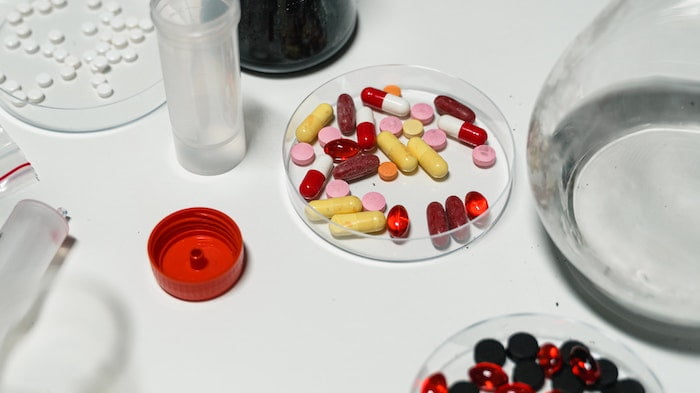
Whilst we often think of MDMA and ecstasy as interchangeable names, they can actually be different.
MDMA is short for Methylenedioxymethamphetamine.
Not all drugs that are sold as MDMA actually contain the Methylenedioxymethamphetamine compound.
Equally, not all ecstasy contains the actual MDMA compound.
Some of the other things drugs sold as MDMA or ecstasy can contain:
- amphetamines
- synthetic cathinone
- ketamine
- NBOMe
- paramethoxyamphetamines (PMA) [14]
To make drug production cheaper, and to make it go a bit further, people often mix drugs together, or ‘cut’ them with other substances.
Because it’s impossible to know what a drug we’re taking actually contains, it means that it’s difficult to make sure that what we’re taking is safe or to anticipate what happens when we take it.
You could take ecstasy on different occasions and find that each time you feel a different kind of effect.
This is because we’ll never really be able to pin down what’s in drugs (even from the same source and even from what appears to be the same batch) it can be different. [15]
This can mean taking ecstasy can be risky even without considering the possibility of forming a potential ecstasy addiction.
What Happens When You Take MDMA?
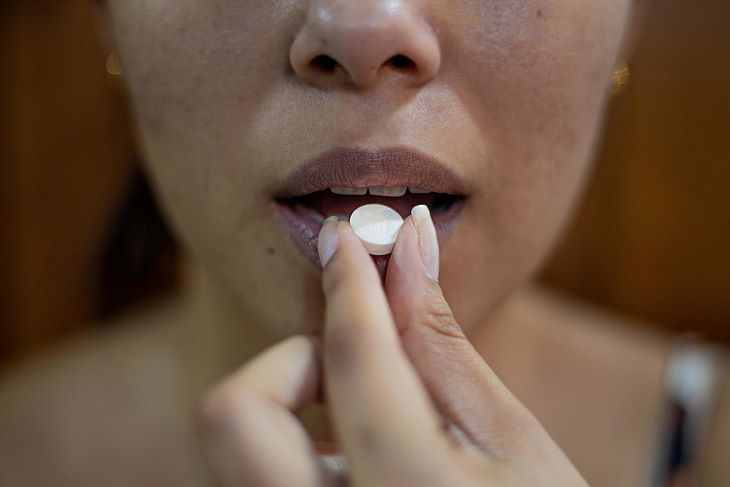
The key thing that happens when you first take MDMA is that the brain will be stimulated.
It will then, therefore, produce more brain chemicals, and these chemicals will become more active in your brain.
The three core chemicals that MDMA stimulates are:
- dopamine
- norepinephrine
- serotonin
Dopamine is related to higher energy levels.
It makes you feel good because it helps you to feel rewarded and therefore more motivated to do things. [16]
Norepinephrine is related to fight or flight (our body’s reaction to anxiety or stress)
It makes our hearts beat faster and increases blood pressure. [17]
Serotonin is known as the happy chemical because it is so linked to our mood.
It makes us feel more relaxed, more trusting and more open to others, in both social and sexual contexts. [18]
The release of these three chemicals can set off a range of different symptoms in the brain and the body.
Whilst these things can often feel pleasant, there are some adverse side effects (both physical effects and psychedelic effects) that you should be aware of.
MDMA: Effects on the Brain
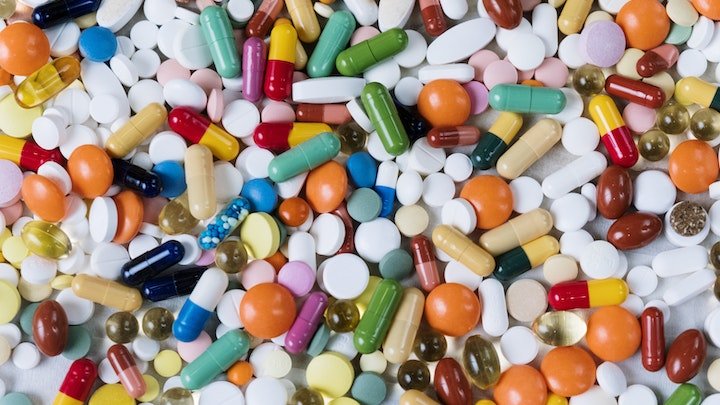
Short-Term Effects
- feeling very happy or experiencing euphoric effects
- increase in confidence
- increase in energy
- senses feel more intense
- feeling like you’re floating
- seeing or hearing things that others might not (hallucinogenic effects)
- feeling anxious
- panic attacks
- acting irrationally or on impulse [19]
Long-Term Effects
- dependency
- depression
- issues with memory
- reduced ability to focus [20]
MDMA: Effects on the Body

Short-Term Effects
- clenching or grinding the jaw/teeth
- burry vision
- pupil dilation (pupils appear visibly larger)
- a tingly sensation in or on the skin
- heat stroke
- higher heart rate
- higher blood pressure
- notable sweating and high body temperature
- pain or tension in the muscles
- feeling less hungry
- dehydration
- being sick
- muscle convulsions [21]
Long-Term Effects
- possible withdrawal symptoms
- increased frequency of cold and flu
- issues with liver function
- issues with kidney function including kidney failure
- issues with sleep
- dilutional hyponatremia (drinking so much the brain swells, can lead to coma or death) [22]
How Quickly Does MDMA Take Hold?

The way that you take a drug depends on how fast it will be to act, and how long you will feel the effects for.
If you snort MDMA, you will feel the side effects much quicker than if you ingest it.
Typically, you will start to feel the high of MDMA anywhere between 20 minutes and an hour after you take it.
The high can last for around 4 hours.
This high can be extended by taking multiple tablets, but this can also increase the risk of accidental overdose. [23]
How Long Does MDMA Stay in Your System?

The thing that dictates how long something will stay in your body is called a half-life.
A half-life shows how long it takes for half of a substance to leave the body.
MDMA’s half-life is 8 or 9 hours.
That means that after 8-9 hours, half of the substance would have left your body.
This means that it will take about 16-18 for MDMA to fully leave your system. [24]
This will also depend on other factors that will impact how long a drug will stay in your body, including:
- how much of the drug you took
- the strength of the drug you took
- if you took anything else with the drug (other drugs or alcohol)
- if you are on any medications for health reasons
- your height, weight and body mass
- if you have used drugs before
- if you ate, and if so, how much or how long before/ after you took the drugs
Drugs Testing for MDMA
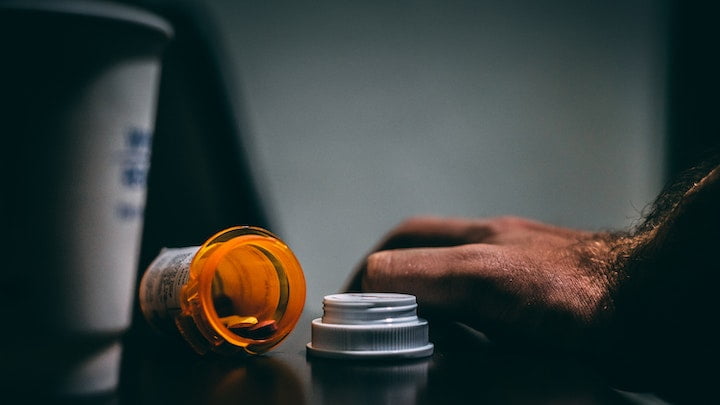
Drug testing can identify if you have substances in your system.
This means that it will be possible, in some cases, to tell if you have used illegal drugs through routine testing.
1. The Science
MDMA can be detected through a range of different tests, including:
- blood tests
- hair tests
- saliva tests
- urine tests
Each type of drug test has different detection windows.
A detection window is the period of time after taking a drug that it can be identified in your system through drug screening.
2. Testing for MDMA through Blood
A blood test can identify MDMA in your system for anywhere between 24 to 48 hours.
That means that if you give a blood sample for a drug test, it is likely to show positive for 1-2 days after you have taken MDMA.
This means that blood and saliva testing have the same detection window. [25]
3. Testing for MDMA through Hair
A hair test can identify MDMA in your system for up to 90 days.
That means that if you give a hair sample for a drug test, it is likely to show positive for up to 3 months after you have taken MDMA.
This is because substances can be identified in the hair follicle for a much longer period than in any other bodily material. [26]
This means that hair testing has the longest detection window.
4. Testing for MDMA through Saliva
A saliva test can identify MDMA in your system for anywhere between 24 to 48 hours.
That means that if you give a saliva sample for a drug test, it is likely to show positive for 1-2 days after you have taken MDMA. [27]
This means that blood and saliva testing have the same detection window.
5. Testing for MDMA through Urine
A urine test can identify MDMA in your system for anywhere up to 72 hours.
That means that if you give a saliva sample for a drugs test, it is likely to show positive for 3 days after you have taken MDMA. [28]
This means that urine testing has a median (middle) detection window.
The Law
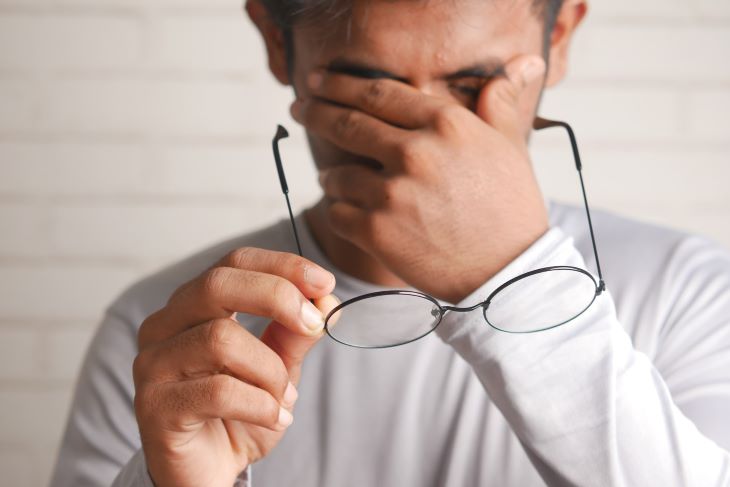
The law states that you can be requested to provide a sample for drug testing in specific circumstances.
These include:
- as part of health and safety regulations at work (usually, if you use heavy machinery) [29]
- if you have been stopped by police whilst driving and they have reason to believe you are under the influence [30]
- in relation to certain criminal offences [31]
In all of these instances, you do not legally have to provide a sample, but if you refuse to do so, you may face either disciplinary or legal repercussions, so it is in your best interest to comply with drug testing if you are asked to do so.
Support for Frequent Use or Dependency on MDMA

If you feel that you or a loved one are struggling with MDMA, are increasing the amount you use and think that you may be becoming dependent, there are ways you can seek support.
1. Helping you Withdraw
Ecstasy is a psychologically addictive drug.
This means that there aren’t really any compounds in the drug that would cause physical addiction, but you can become psychologically addicted to the drug.
For this reason, you may experience some uncomfortable feelings when you stop using ecstasy.
These can include:
- feeling low, sad or depressed
- feeling anxious or stressed
- feeling agitated, annoyed or angry
- feeling paranoid
- struggling to sleep
- reduced appetite [32]
We offer support to help you refrain from using ecstasy whilst dealing with these uncomfortable symptoms.
2. Therapeutic Support
A lot of the time, people find that dealing with the psychological aspect of addiction can be more difficult than they expect.
Addiction is a tricky thing to overcome, but with the right sources of support, you can begin to move forward to sober living.
Some of the different forms of therapeutic intervention we offer as part of our drug and alcohol rehab programmes include:
- acupuncture
- acceptance and commitment therapy
- addiction counselling
- cognitive behavioural therapy (CBT)
- contingency management
- dialectical behavioural therapy (DBT)
- holistic therapies
- individual therapy
- intervention
- family therapy
- group therapy
- medically assisted therapy (MAT)
- motivational enhancement
- motivational interviewing
- trauma therapy
Get Help Today
Addiction is a difficult path to walk.
But, just because something is difficult doesn’t mean that you have to do it alone.
OK Rehab is open and able to extend a hand to anyone out there needing support for addiction or looking into their options regarding drug and alcohol rehab.
We offer professional advice and treatment options to suit a range of people in a range of different situations. By doing this, we hope to help you find your way to sober life.
If you are concerned about the wellbeing of a loved one, or think that you would benefit from contact with staff at our specialist centres, you can contact us today to find out how we can help you.
You can contact us by calling 0800 326 5559, or internationally on 0330 333 8188.
Alternatively, you can speak to us online on our free chat service to find out how we can start to help you find your way back to sober life.
References
[1] https://nida.nih.gov/publications/drugfacts/mdma-ecstasymolly
[2] https://www.emcdda.europa.eu/topics/pods/synthetic-drug-production_en
[3] https://www.ncbi.nlm.nih.gov/books/NBK539896/
[4] https://pubmed.ncbi.nlm.nih.gov/16048814/
[10] https://psycnet.apa.org/record/1990-18740-001
[11] https://www.emcdda.europa.eu/publications/drug-profiles/mdma_en
[13] https://nida.nih.gov/publications/drugfacts/mdma-ecstasymolly
[14] https://adf.org.au/drug-facts/mdma/
[15] https://www.sciencedirect.com/science/article/pii/S0039914021008262
[17] https://www.ncbi.nlm.nih.gov/books/NBK537259/
[18] https://www.ncbi.nlm.nih.gov/pmc/articles/PMC5864293/
[19] https://adf.org.au/drug-facts/mdma/
[20] https://adf.org.au/drug-facts/mdma/
[21] https://adf.org.au/drug-facts/mdma/
[22] https://www.ncbi.nlm.nih.gov/pmc/articles/PMC4027093/
[23] https://adf.org.au/drug-facts/mdma/
[24] https://pubmed.ncbi.nlm.nih.gov/11085324/
[25] https://www.ncbi.nlm.nih.gov/pmc/articles/PMC81503/
[26] https://www.ncbi.nlm.nih.gov/pmc/articles/PMC5601020/
[27] https://www.ncbi.nlm.nih.gov/pmc/articles/PMC3178664/
[28] https://www.ncbi.nlm.nih.gov/pmc/articles/PMC3159864/
[29] https://www.gov.uk/monitoring-work-workers-rights/drug-testing
[30] https://www.gov.uk/drug-driving-law
[31] https://www.gov.uk/government/collections/drug-testing-on-arrest-guidance-for-police-forces
[32] https://nida.nih.gov/publications/research-reports/mdma-ecstasy-abuse/mdma-addictive





